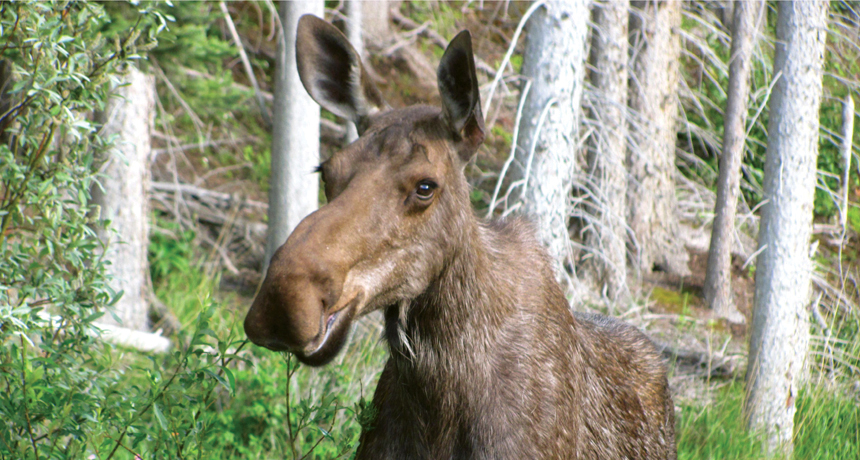Moose drool can undermine grass defenses
Saliva from big grazing animals sabotages plants’ chemical weaponry

POWER OF DROOL As moose feed, their slobber may weaken the toxic defenses of certain grasses.
Veronika Ronkos/Wikimedia Commons (CC BY-SA 3.0)